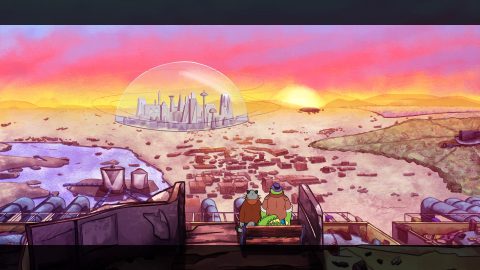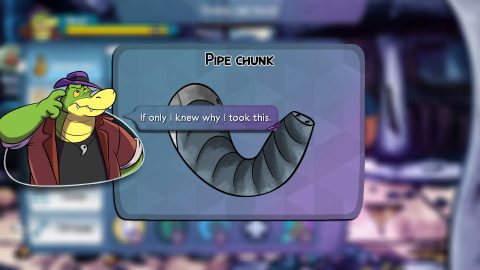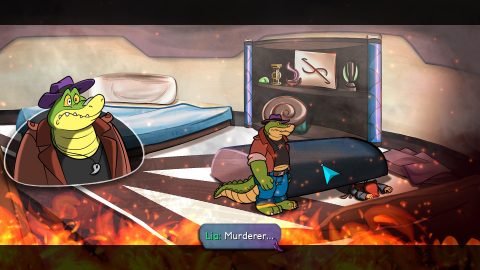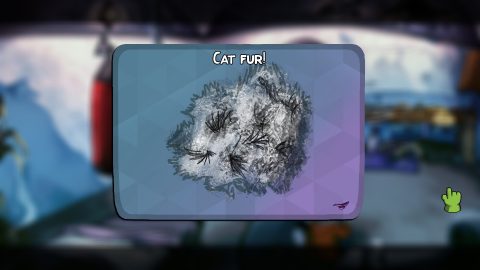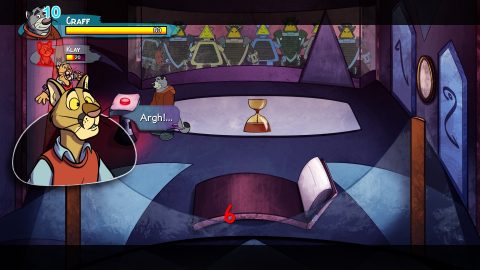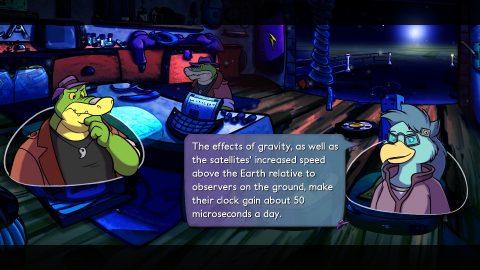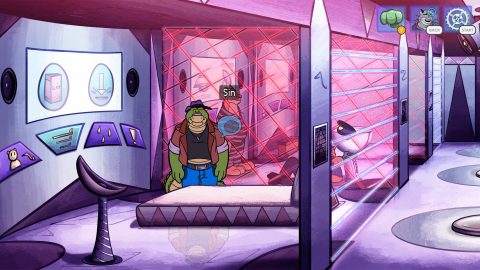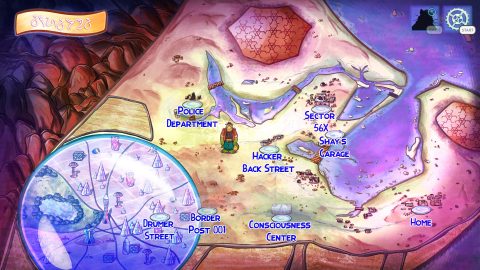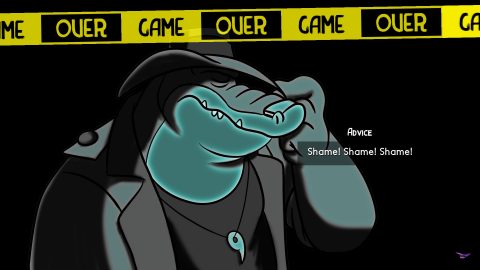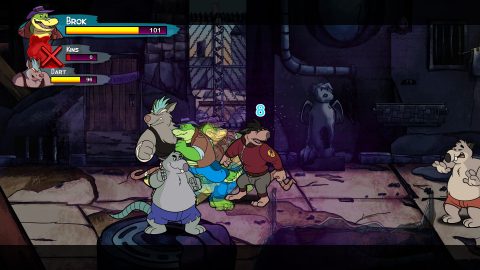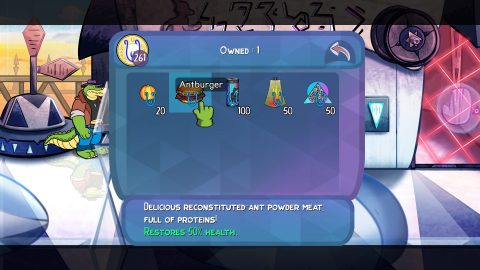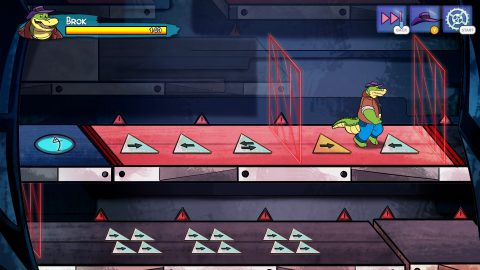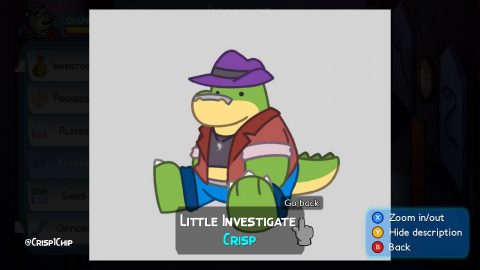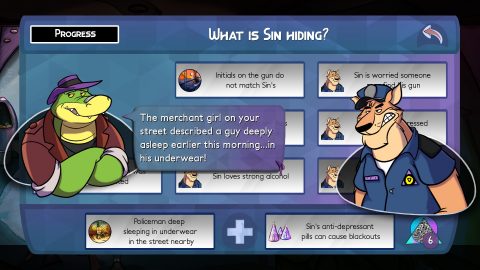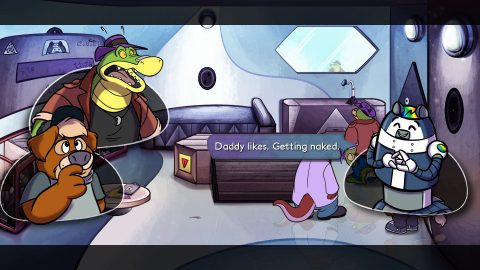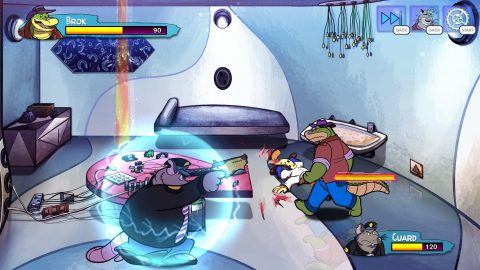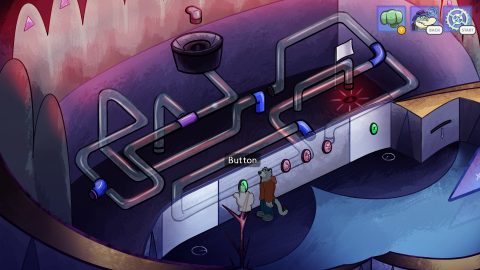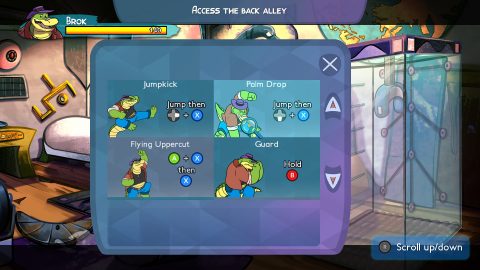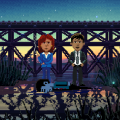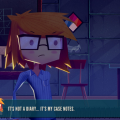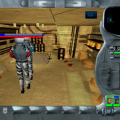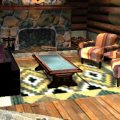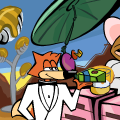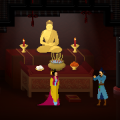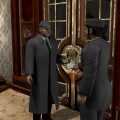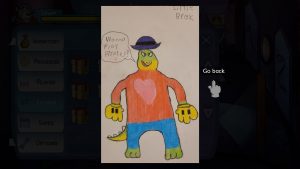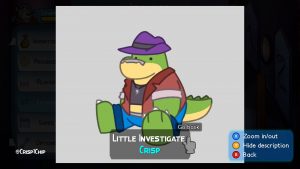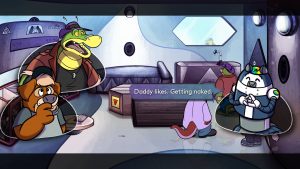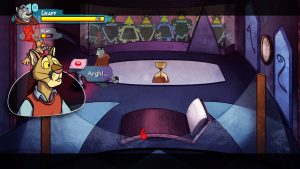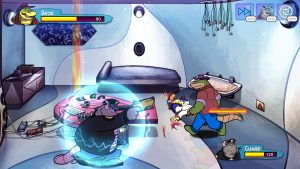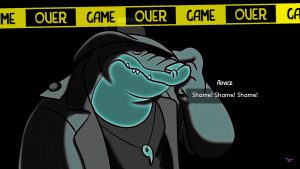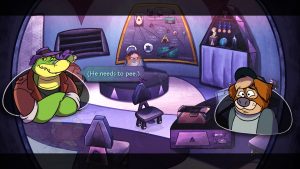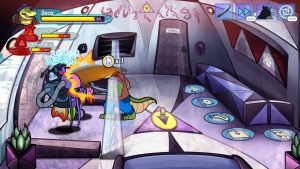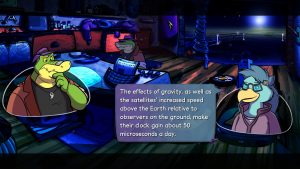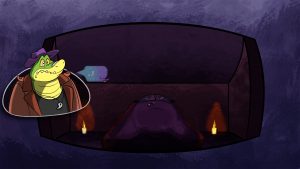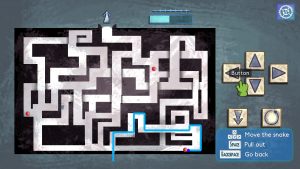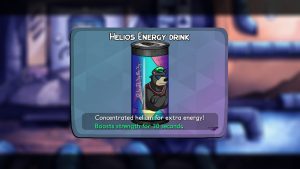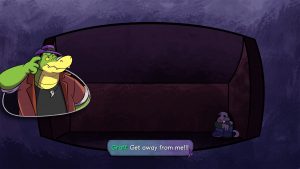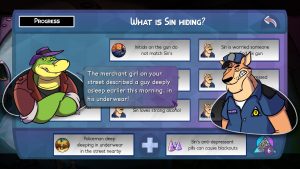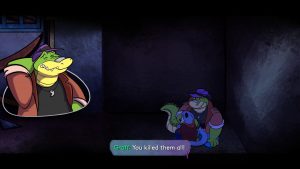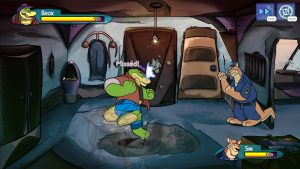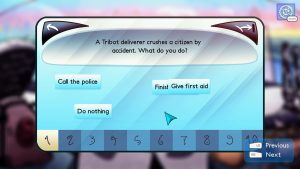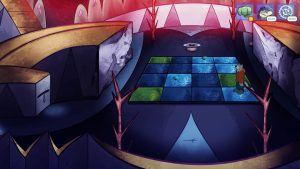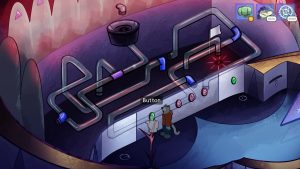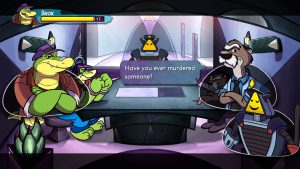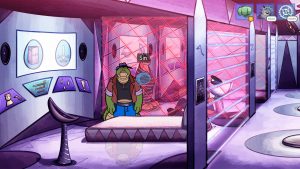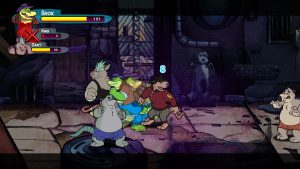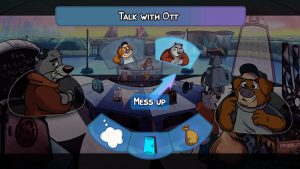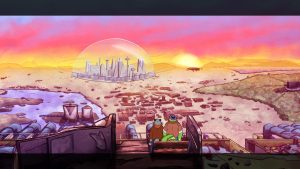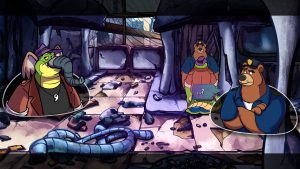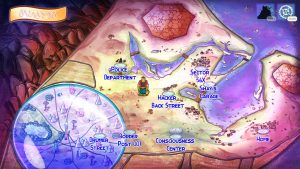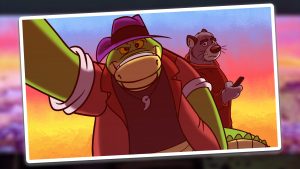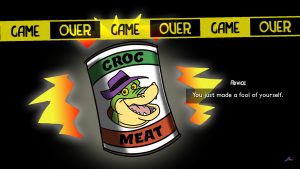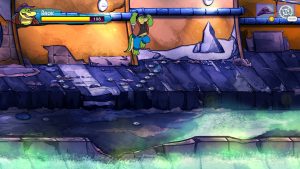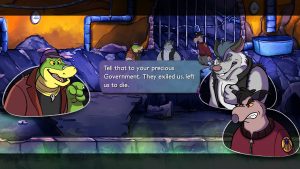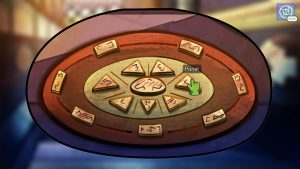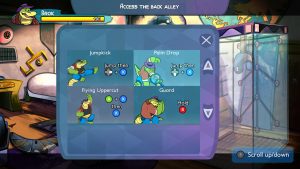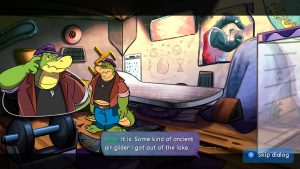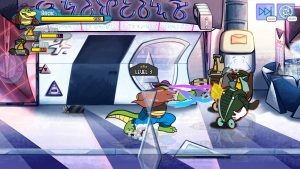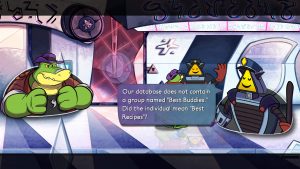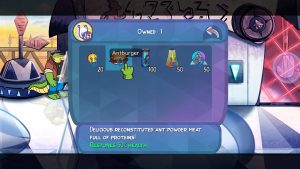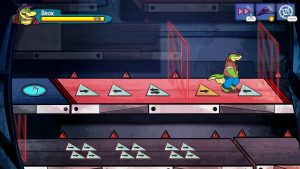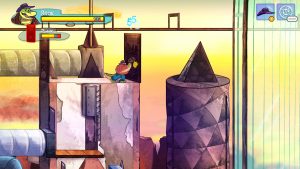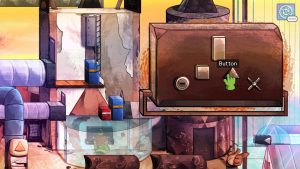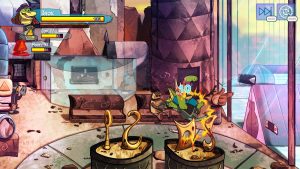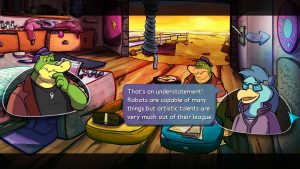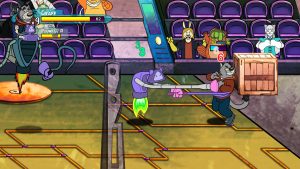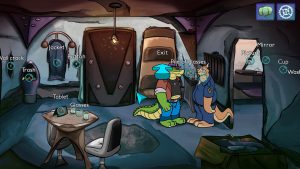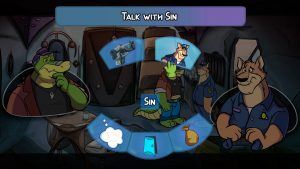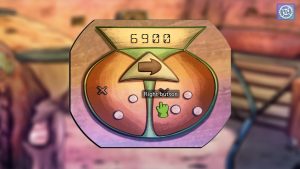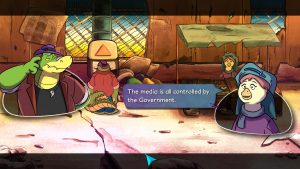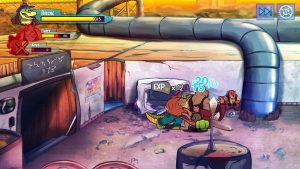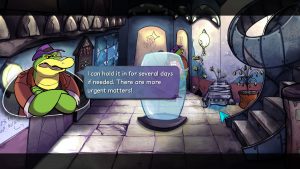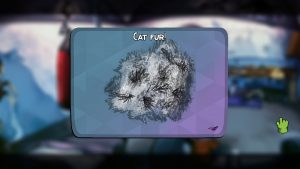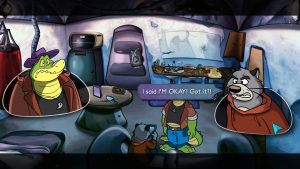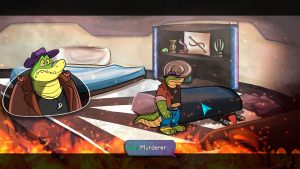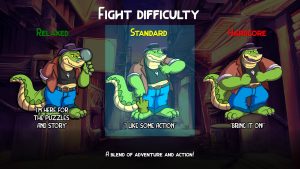Adventure games and arcade games have tried since almost their very origin to mix together, with varying levels of success. On the low end, you have the assortment of adventure games that would throw in a badly programmed minigame to mix things up and more than likely add a little extra playtime. When done somewhat well, you have the Quest for Glory series and its emphasis on real-time RPG combat. If you want to go more obscure, there’s always Beam Software’s Nightshade and its ill-advised fight scenes.
On another tangent, if there’s any two genres that’ve made a miraculous comeback as of late, it would be point and click adventure games and the beat-em-up. Return to Monkey Island and Beyond A Steel Sky proved that people would return to the genre just as much as games like River City Girls and Streets of Rage 4 did. Putting these two thoughts together, one might wonder what would happen if somebody put together the seemingly completely disparate combination of an adventure game and a beat-em-up. It sounds like a hard sell put on paper like that, but Brok the Investigator is here to try it, regardless. And it works, for the most part, aside from a few flaws in various areas.
Sometime in the future, an alligator named Brok wakes up in his apartment to find it’s been set aflame, and his wife is trapped underneath a bookcase he just can’t move. As she curses Brok as a murderer and blames him for everything, he soon wakes up from what was just another nightmare. Unfortunately, the real world is hardly better for him. Trapped in a post-apocalyptic slum, he’s stuck with his adopted cat son Graff, who most of the time barely tolerates him. Paying the bills as a private investigator and sometimes handyman, the game starts when Brok is given a job by a cop who’s misplaced his firearm and needs it back urgently. Things rapidly escalate into a conspiracy that’ll determine the fate of the post-apocalypse.
A prime example of the game’s undercurrent of tonal whiplash
Things quickly turn out to be quite bleak for everyone involved. The Slumers aren’t only under constant threat by a gang of rats known as the Squealers, but the machines that drop the pills they need to survive the constant radiation are starting to malfunction. While things seem utopian enough behind the glass dome where the privileged Drumers live, robots enforce order through brutal means, citizens find themselves losing their memories, and prisoners suddenly vanish without warning from their cells. Meanwhile, Graff is given an exam that runs across the game, his only hope of actually getting into the dome. Graff’s segments are typically much more puzzle-oriented than Brok, and despite having a fully-formed moveset, doesn’t get into nearly as much combat.
Sadly, you cannot use the fur to make yourself a better son.
Brok himself is a fairly likeable character, generally being a lot goofier and more of your meathead than your typical ‘tough dad’ protagonist. Graff, however, is harder to root for, given how angsty he gets. The strained relationship between him and Brok isn’t always believable given that for most of the game, Brok comes off as perfectly reasonable towards him. Despite the cartoony look, the narrative is a tale of conspiracy, post-apocalyptic decay, trauma, and strained familial relationships delivered through a cast that looks like they came from a forgotten Hanna-Barbera cartoon. It isn’t that serious stories can’t be told with anthropomorphic characters – look at Tails Noire (formerly known as Backbone) for one example. It’s more that the bright colors and exaggerated expressions undermine the handful of surprisingly dark moments the story holds.
The more you press the button, the higher your final grade.
The narrative holds up fairly well, despite those occasional shifts in tone. The post-apocalyptic tropes aren’t anything new, but the characters and general style help make up for that. Despite this, there’s a few deeper flaws, the greatest one of which is that the game feels like it’s pulling too many plot threads at once. There’s a lot of things that feel like could have been broken off into another game entirely, like Brok’s missing memories or elaborating on what happened with the Squealers. There’s also a strange metaphysical side to things that feels like it never quite fits with the game’s somewhat more grounded vibe, only somewhat paying off during one specific ending. A point also needs to be made about the game’s climactic final boss — while given the game’s genre it clearly needed one, how that actually manifests feels a little silly.
The game itself is split into six chapters, covering several days. Most of the time you’ll be playing as Brok, although at several points you’ll be given the option to switch to Graff. Every time you have control of him, Graff will have his own goals he’ll have to accomplish before a chapter is cleared, often about how to make progress on his final exam. While Brok can chat with Graff every so often at home, their paths only intertwine somewhat. Brok ends up getting arrested early in the game, and only by figuring out how to escape under a hidden time limit can he reach Graff’s science fair in time. During their time as player characters, Brok and Graff can never meet, even if they’re technically in the same room. There’s also only one specific point where both of them actually work together as well, which seems like a missed opportunity.
Using the mouse and keyboard, you either have the option of moving by clicking the screen, as is tradition, or using the WASD keys. The left mouse button will interact with an object or person, while the person brings up the interface that handles inventory, your cell phone, loading, saving, and so forth. On a controller, the left stick moves the character, while another button automatically interacts with anything nearby. Or instead, you can use the right stick to move a cursor around the screen and highlight things from further away, although this lacks precision. Generally, the controls work well enough for general adventuring purposes, although the most ideal way to play would likely be switching from a mouse and keyboard to a controller as needed – obviously only possible on PC. Using the controller during adventuring segments lacks the precision in selecting hotspots a mouse would give you, while the keyboard never feels quite natural during a fight.
The world map, a few chapters into the game.
There’s one other button to keep in mind, pressing which will move your character into a fighting stance. From here, your character gets the ability to jump, which you’ll use for the occasional bits of platforming. More importantly, you can perform your various attacks. Surprisingly, you can attack any character you come across, despite repeated warnings from them. Depending on who you do this with, a variety of things could happen. If they’re not vital to the plot, it might send the NPC running, knock them out, or in rare cases, even kill them. There’s a large number of cases where a lot of adventuring can be bypassed by simply pummeling the right person, if you’re fed up with puzzle solving. There’s also the counterpoint that there’s plenty of potential fights you can avoid by solving the right puzzle.
Pummel the wrong person, and this happens.
Once you get into a fight, either by punching the wrong NPC or getting thrown into a number of mandatory battles, the game quickly takes after more modern brawlers such as Streets of Rage 4. Brok is a little stronger, and Graff is a little more agile, but both share most of the basic moveset you’d expect from the genre. Some additions from the usual genre repitiore are a strong attack that can be performed mid-combo to knock down enemies and a block button that can transition into a quick dodge. You also have a super meter that builds as you take damage or let time pass at low health, and you can trade in your health at any time to build it up faster. Once it’s full, you get access to a powerful super move that does major damage to everybody around you, which does a lot to help turn the tide of a fight.
The combat, while not quite on the level of a modern, dedicated brawler, is more than good enough to balance out the adventure elements. The controls are snappy, fights never outlast their welcome, and the enemy variety is more than enough. There’s also a very lenient juggle mechanic that lets you pound enemies through the air to build up a lot of extra damage, which never ceases to be fun to pull off. While there could perhaps be further polish – the ability to grab enemies, or perhaps more weapons to make use of, the game’s split focus makes such omissions forgivable. The game never feels like it throws too many fights at you, and those that are absolutely mandatory are rare. One exception being the virtual reality fights that Brok enters every night, which feel a little shoehorned in to make sure players at least engage somewhat with the combat engine.
It isn’t just fights you’ll take damage from – long falls, sparking machinery, mines and other hazards will reduce your health as well, and this damage will carry over between fights. While most of the time you’ll be able to sleep at home to restore your health, during fights and other tense situations you’ll have to rely on a supply of healing items to undo damage. While most of these dangers will simply reduce your health, there’s a number of instant death scenarios, especially if you derail the plot too far. Thankfully, death always respawns you back at whatever ‘room’ you perished in, which makes such things mostly forgivable. You also get a number of goofy images along with your chosen demise, which helps to lessen the sting.
One of the game’s rare moments of non-combat reflexes.
Besides the assortment of inventory items you’ll collect, you’ll also collect healing items, buff items, and Unis, the local currency. Unis can be spent on various quests you’ll undertake – paying Brok’s rent, for example – but can also be used to buy items. You’ll also earn experience by winning fights, with each level of experience letting you enhance your character’s maximum HP, attack strength, or the effectiveness of their super attack. XP also lets you buy concept art and fanart included with the game, of which there’s a surprising amount. While not all of it is strictly great, a lot of it is at least pretty charming.
Besides the traditional inventory and logic puzzles, there’s also a handful of points where Brok will have to interrogate certain characters, using clues he’s gleaned from the environment. This has you picking two related facts to have Brok come to a logical conclusion, keeping this up until you’ve gotten a confession from your suspect. It’s a neat idea, one that feels closer to Ace Attorney than your typical adventure game. Unfortunately, there will be times when you know the thought you’d like Brok to express, but you’ll have to fumble for the exact combination to get it to come out. Either that, or you missed the one interactable that’ll give you the last clue you need to finish your set.
The game does a lot to ease potential frustrations you might run into – one button will reveal every hotspot on screen, preventing a lot of pixel hunting. Not included in these hotspots are collectible ads that resemble QR codes you can pick up. You can spend these on clues to the game’s various puzzles, each one revealing progressively more blatant hints in the old Universal Hint System style. And for those less interested in the game’s brawler segments, a ‘story’ difficulty is provided that lets you bypass any fight you find yourself in. There’s also a couple of harder difficulties to play through, although this only really buffs enemy health and damage values.
The game isn’t free from the leaps of logic one might have to expect from adventure games, however. One particularly outrageous example being a bear guarding a door who more than most likely won’t let you through. The solution to this problem is to find a rubber cutting knife disguised as a lever, which you’ll use to cut through a certain piece of rubber piping. Combining that pipe with a piece of string and a pair of wings you picked up from a statue you punched into rubble, you make an elephant disguise. Your best clue to any of this is that the guard seems to become distracted the subject of elephants comes up. You’re only told why this is the case after you actually solve the puzzle. Given puzzles like this, the temptation to punch your way through your problems is very strong, indeed.
Protip: This is not a good way of solving a murder case.
The game also offers quite an amount of different things you can do, and once you clear the game once, you get a flowchart, showing you every potential option you can take at a certain junction and what it’ll actually do. While some decisions have way more of an effect than others, the flowchart is still quite helpful for discovering the game’s eleven different endings. While the game isn’t quite replayable enough that you won’t get tired of replaying the game to see every single one, the flowchart and the ability to skip previously seen dialogue helps reduce the repetition somewhat. Besides the main campaign, you can also play through a randomly generated fight at one of five difficulty levels. It’s not the sort of thing that’ll replace your favorite brawler, it makes for a nice extra, at least.
Despite the stylistic clash, the art is consistently well drawn. The animation isn’t as smooth as one might guess from screenshots alone, but considering the difficulty of hand-drawn animation, this is forgivable. The game offers full voice acting throughout, and the actors fit the characters well enough and add some life to the proceedings. The soundtrack offers a fairly wide variety of music as well, going into more subdued, atmospheric pieces during adventure segments, with higher-tempo rock and tempo pieces during fight scenes. One particular highlight for the music is probably the theme that plays during interrogation scenes, where instruments fill out the track and bring it towards a climax as you make progress during the investigation itself.
Overall, despite all the reasons that one would think it wouldn’t work, it’s a mix of genres where the strengths of one side help to compensate for the flaws of the other. There’s potential in the setting here for future games, which we’ll hopefully see in the future. Both to investigate the parts of the world that are left disappointingly unexplored, and to see another pure brawler that can follow on from the genre’s recent zeitgest. As it is, while it’s a game that adventure game fans will likely get more out of than beat-em-up enthusiasts, it’s a game definitely worth trying for both. (And for fans of anthropomorphic characters, there’s not much quality to find in either sphere, so any of them should definitely pick the game up as well.)

